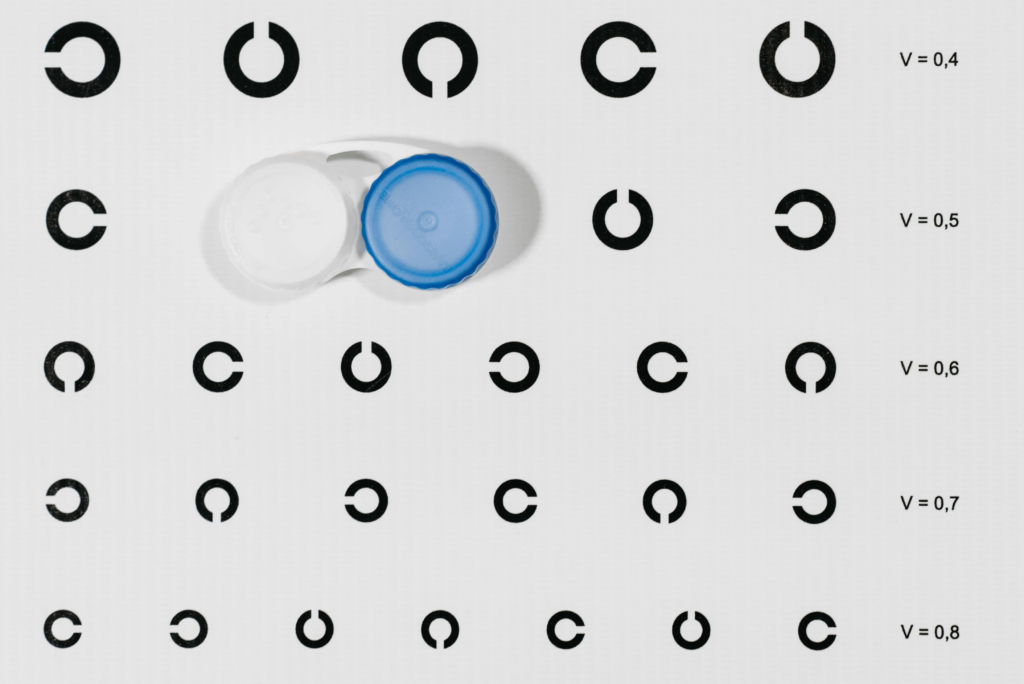Contact Lens Innovations Show Promise for the Growing Population of Visually Impaired Arab Americans

As vision tends to change with age, many older adults suffer from eye conditions that contribute to vision loss.
The Arab American Eye Study reveals that Arab American adults are disproportionately burdened by these age-related eye diseases, including cataracts, diabetic retinopathy, glaucoma, and macular degeneration.
Compared to their White American counterparts, Arab Americans are reported to experience higher rates of cataracts (45.4% vs. 40.7%), diabetic retinopathy (11.7% vs. 4.2%), glaucoma (8% vs. 6%), and age-related macular degeneration (10% vs. 8.9%).
Considering these eye diseases can affect long-term vision health and reduce the overall quality of life, visually impaired Arab Americans must seek appropriate vision care and treatment to manage their condition. Fortunately, contact lenses emerge as an innovative tool that can address various stages of the vision care pipeline, from diagnosis and detection to treatment and management.
Eye conditions can be diagnosed through contact lenses
Since the age-related eye diseases mentioned earlier are progressive, early detection is key to dramatically reducing the risk of permanent vision loss among affected Arab Americans. Comprehensive eye examinations can observe changes in the appearance and structure of eye anatomy, but measuring predictors of disease risk, such as intraocular pressure (IOP), can take time.
In this light, researchers have developed a novel contact lens called GlakoLens, which is embedded with electric sensors that measure IOP to diagnose glaucoma, a condition characterized by the buildup of fluid in the front part of the eye. Compared to conventional eye exams, these lenses can monitor the eye’s IOP continuously over a 24-hour period for a more accurate diagnosis that informs the treatment plan.
Contact lenses serve as accessible corrective tools
In addition to diagnosing eye conditions in the early stages, contact lenses can function as corrective eyewear for refractive errors. Research shows that refractive errors like myopia can occur after surgery for cataracts, but contact lenses offer patients a convenient way to seamlessly correct their vision.
Furthermore, contact lenses are becoming more available via online retailers, which is especially important for Arab Americans who may struggle with accessing prescription eyewear from traditional optical clinics. ContactsDirect enables individuals to order contact lenses online, with their selection including trusted brands like Acuvue Oasys and Dailies and corrective types ranging from daily-wear single-vision lenses to monthly multifocal options. The retailer also accepts vision benefits from most insurance plans, further facilitating eyewear access and affordability among Arab Americans with vision impairments.
Contact lenses for ophthalmic drug delivery
Lastly, continuous innovation in contact lens development has also improved drug delivery for the effective treatment of various eye conditions. A systematic review published in the Asian Journal of Pharmaceutical Sciences notes that drug-laden contact lenses can deliver drugs with higher bioavailability and longer release duration compared to the topical administration of eye drops typically used to treat the conditions mentioned above, such as cataracts and glaucoma.
For older Arab American adults who may have difficulty instilling eye drops correctly and at appropriate times, these contact lenses that deliver ophthalmic solutions directly to the eye can thus reduce the risk of disease progression due to missed treatment.
Improving vision care access among Arab Americans
While these contact lens innovations show promise for the diagnosis and treatment of common eye conditions among Arab Americans, reducing the overall disease burden is still dependent on access to vision care. As discussed in a previous post, there remains the need to improve healthcare access for the Arab American population — starting with services like eye exams that address cultural and linguistic barriers, and healthcare professionals like optometrists and ophthalmologists who are sensitive to the unique needs of the said demographic.
Only when healthcare organizations and providers prioritize diversity and inclusivity in their service delivery can the potential of contact lenses for eye disease treatment and management be fully realized.
Please note that this post was written by a contributor and does not necessarily reflect the views of Arab America’s employees. These posts help allow Arab America to keep producing our wonderful original content.
Don’t forget to check out Arab America’s blog!


